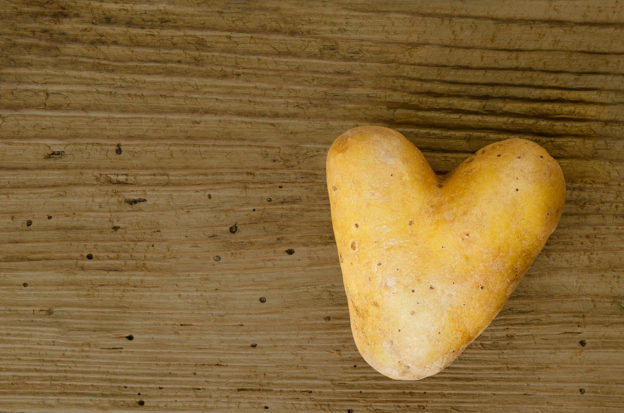By David Blyweiss, M.D., Advanced Natural Wellness
April 6, 2018
- All starches are not created equal
- Resistant starch: A superfood for your digestive system
- Where to find these health-giving starches in your diet
A large part of the carbohydrates in your diet comes from starches. Potatoes, breads, pasta and rice all fall into this category.
I’m not a fan of these types of starchy foods. That’s because when you eat too many of them they can drive your blood sugar up and lead to metabolic disorders. So these are some of the foods I consistently advise my patients to cut back on.
However, there is a certain type of starch that has garnered more and more interest over the years. It’s called “resistant starch”. And it falls into an unusual category. Along-side being a starch, it’s also a highly-fermentable insoluble fiber.
That’s right. It’s a starch that is also a fiber. Plus, it has another curious feature. It acts like both an insoluble and soluble fiber.
MD Exposes the Hidden Danger to Your Eyes

When your eyesight starts to fail, it's a real problem. Suddenly you can't go to the grocery store... you can't get to the doctor if you have an emergency... you can't meet your friends for dinner…
Your "regular" doctor doesn't have time to keep up with the latest research. And the same goes for eye doctors. They go to school to learn how to fit you for glasses and contacts, but have no way of preventing the damage and loss of eyesight that threatens your freedom and independence.
Let me show you something that explains a LOT about how your eyes work.
In my FREE Special Report, I'll show you a HUGE, untapped resource for your eyes that safely and naturally restores clear, effortless eyesight.
Click here to get started...
Like insoluble fibers, these starches aren’t digested. So they keep things moving through your digestive systems and help you pass waste more quickly. They keep you “regular”.
And like many forms of soluble fiber, resistant starches are broken down (fermented) by the microbes in your colon. This not only keeps your gut bacteria happy, it also produces short-chain fatty acids (SCFAs).
These SCFAs, which have unusual names like butyrate, acetate and propionate, are a primary energy source for cells of the colon’s lining. They’ve also been linked to a reduced risk of inflammatory diseases, diabetes and heart disease.
Resistant Starch: A Superfood for Your Digestive System
In particular, an increase in the SCFA butyrate is especially beneficial to your health. It helps increase blood flow in your colon and also appears to reduce the risk of colon cancer by blunting the spread of cancer cells and stimulating their death.
What’s more, butyrate reduces pH levels, harmful metabolites and enzyme activities that are harmful to the healthy microbiota in your gut. There is even evidence that it can reduce IBS symptoms.
But your gut isn’t the only place you’ll see benefits when you increase your intake of resistant starches.
Are You Suffering From...
- Love handles and a pot belly
- Romance that isn't what it used to
- Forgetfulness and inattention
- Low (or no) strength and endurance
- A sex drive that's shifted into neutral...or worse
If so...you may have Mature Male Burnout. Click here to discover more about this unique condition and what you can do about it.
While we normally think of starches as being bad for our metabolism, resistant starches have a decidedly positive effect on blood sugar, insulin response and weight.
Getting about 25 to 30 grams of resistant starch in your diet each day could potentially increase the early release of insulin after your meals by over a third. This is especially important if you have metabolic syndrome or diabetes, because it greatly increases the clearance blood sugar after your meals.
But it gets even better. Not only does it reduce your blood sugar and improve insulin response right after eating one meal. You’ll also see improved glucose and insulin response up to five or more hours later when you eat your next meal.
When you combine the effect of resistant starches on your microbiota and metabolism, other positive health effects – including weight loss – are sure to follow.
Where to Find Resistant Starches in Your Diet
The absolute best source of resistant starch is green bananas. Before they ripen, they are almost entirely starch. And most of it is digestive-resistant. But as they mature, that starch breaks down into unhealthy sugars. Thus, an unripe banana won’t cause the same sugar spike that a ripe one will. (Plantains work much the same way.)
Thankfully, you don’t have to eat them in their raw and bitter form. You can slice green bananas up and use them in numerous ways for cooking. In fact, they are a staple of people who live in the Caribbean. Just search for green banana recipes in your favorite search engine.
Lentils, chickpeas, kidney beans and baked beans are also rich in resistant starches. So are grain products. However, I personally recommend sticking with gluten-free grains such as millet, quinoa and buckwheat.
And here’s a real handy trick…
When you cook potatoes, then let them cool down, it makes the starch in the potatoes become resistant. Plus, if you cool the potatoes and reheat them later (like you would do for a twice baked potato) it increases the amount of resistant starch even further.
SOURCES:
Ohira H, et al. Are Short Chain Fatty Acids in Gut Microbiota Defensive Players for Inflammation and Atherosclerosis? J Atheroscler Thromb. 2017 Jul 1; 24(7): 660–672.
Lockyer S. et al. . (2017), Health effects of resistant starch. Nutr Bull. 2017; 42:10–41.
Zaleski A, et al. Butyric acid in irritable bowel syndrome. Prz Gastroenterol. 2013; 8(6): 350–353.
Brighenti F, et al. Colonic fermentation of indigestible carbohydrates contributes to the second-meal effect. Am J Clin Nutr. 2006 Apr;83(4):817-22.







